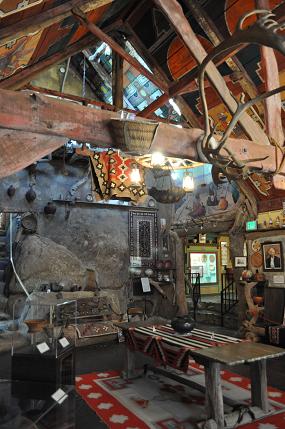RARE BIRD ALERT: A bean goose has been sighted at the Salton Sea. So, we headed out, binoculars in hand, in search of this medium sized goose which breeds in northern Europe and Asia and is seldom seen in the United States. Scanning flocks of white snow geese we were thrilled to see dozens of sandhill cranes, necks stretched high above their squatty neighbors, but no bean goose.
Easily spooked, the flocks would take flight at the sound of our car, filling the sky with flapping wings and honking cries.
In our search we were pleased to see many beautiful birds as we drove through the fields on dirt roads and climbed the observation tower.
Egret
GBH
Kingfisher
Roadrunner
The lookout
BUT NO BEAN GOOSE. Here is what my brother Kimball says about the elusive visitor:
A Bean Goose: A Eurasian goose which is actually considered now to comprise two species – the “Taiga Bean-Goose” (Anser fabalis) which breeds across the taiga regions from Scandinavia to eastern Asia, and the “Tundra Bean-Goose” (Anser serrirostris) which breeds farther north in the tundra regions of Russia.
So how did it get here? Remember that there are thousands of Snow Geese in the same fields and ponds at the Salton Sea as the bean-goose, and some of these Snow Geese breed west of Alaska on Wrangell Island, which is off the northern coast of the Russian Far East. [There are also about equal numbers of Ross’s Geese in the same area at the Salton Sea, but they breed in Arctic Canada]. Maybe even more relevant, the Greater White-fronted Geese that the bean-goose is associating with at the Salton Sea belong to a subspecies that breeds in Alaska, but also in the Russian Far East. So it is possible that a bean-goose from eastern Russian might get “mixed up” with a flock of eastern Russian Greater White-fronted Geese or possibly Snow Geese and migrate down through the Pacific Coast of North America instead of Japan/Korea/eastern China.
Both species of bean-goose have been found in western Alaska, but neither has been found previously in California. So whatever this bird is, it’s a “first” for California.
The bean-goose belongs to the same group of geese that includes the Greylag Goose, which is commonly domesticated – domestic greylags are the big white or gray geese in city parks that like to attack you when you get too close.
The Salton Sea bean-goose was first found on November 9th, and was still there at least as recently as Tuesday the 14th of December.
Stopping at the Sonny Bono Salton Sea National Wildlife Reserve, we perused the visitor center and from the bird sighting list we noted that visitors had been regularly sighting the lone bean goose all week. We returned to the fields and scanned more flocks, but to no avail.
If we couldn’t be successful in our search for a bird, maybe we could at least find salvation so off we went to the nearby strange site of SALVATION MOUNTAIN.
In the nearby depressed town of Niland we stopped for tacos and then took off on a dirt road to find our salvation. This was our second visit to the Salvation Mountain which was boosted in popularity after a visit by Huell Howser. This strange attraction was also a backdrop in a segment of the movie Into the Wild, and it appears in the book “Weird California.”
To our delight, Leonard Knight, the creator, was on hand to greet us. He pulled up a chair for me under his lean-to and we talked while Alan snapped photos. Several people also were visiting, climbing salvation mountain and peering into the little crevices and caves.
Knight is more into love than religion. He even has a place in his heart for heathens like me. He is 79 years old and began painting the mountain in 1984. He lives in his truck year round, in a spot on the earth where temps reach 120 in the summer months.
A quiet spoken man turns an ear to me, unable to hear very well. He speaks of loving fellow man and about how thrilled he is to see people taking photos which may be seen all over the world.
Leonard is worried about what will become of his mountain when he can no longer maintain it. “I’m too weak now to lug bales of hay up the mountain,” he confessed. But many friends drop in to help and donate paint and other needed items. The bright green mountain and red painted symbols and signs stand out against a blue desert sky. Cameras are clicking everywhere.
AND ON TO SLAB CITY
When World War II marine barracks were removed, the slabs remained. In this area, near Niland, squatters set up camp and live here. Also, RVers plop down and together they make up a strange type community. This place was also featured in the movie Into the Wild.
We will be back to make another attempt to locate the bean goose, and will take some goodies to Leonard and donate books to the slab city makeshift library. How lucky we are to have strange places to visit and to find adventure so close to home.

